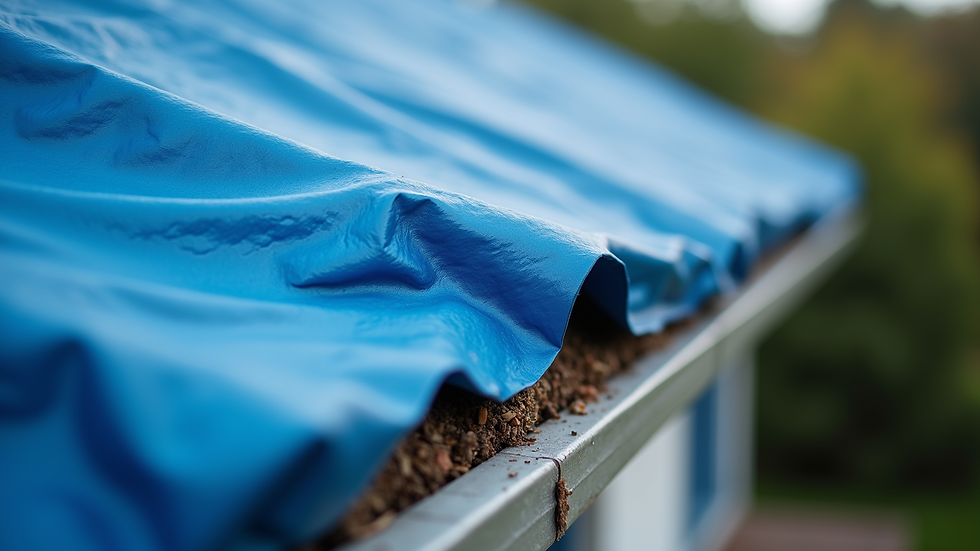When Your Roof Suffers Storm Damage...
- Farrah Dillard

- Jul 31
- 2 min read
Experiencing a storm can be stressful, especially when it leaves your roof damaged. Your roof is a vital part of your home, shielding you and your belongings from harsh weather. Knowing what steps to take after roof damage can help prevent further issues and keep your home safe.
Assess the Damage
The first thing to do after the storm passes is to check for damage. Look for visible signs such as missing shingles, dents, or leaks. According to a recent study, 56% of homeowners reported damage to their roofs after severe storms, making prompt assessment crucial.
Ensure Safety First
Safety comes first when it comes to roof repairs. If you see exposed materials, water leaks, or significant structural damage, stay indoors and avoid any affected areas of your home. It's important to reach out to a professional roofing contractor for a thorough evaluation. Statistics show that homeowners who hire professionals often avoid further costly damages.
Contact Your Insurance Company
After assessing the damage and ensuring safety, the next step is to reach out to your insurance provider. Report the storm damage and share the documentation you've collected, including photos. Insurance companies typically send a claims adjuster to inspect the damage further. Understanding your insurance coverage can significantly streamline the claims process, as 38% of homeowners find navigating insurance tricky.
Temporary Repairs
While waiting for the insurance adjuster and better weather, consider making temporary repairs to prevent additional damage. Use a tarp to cover any holes or missing shingles, securing it down to minimize wind disturbance. It is important not to make permanent repairs until the insurance process is completed. For example, a homeowner who uses tarps effectively reports a significantly reduced risk of leaks thereafter.

Hire a Professional
It’s time to hire a roofing contractor. Hive Roofing will thoroughly assess the damage and provide clear recommendations. After assessing the damage and ensuring safety, the next step is to file an insurance claim. We will report the storm damage and share the inspection documentation, including photos. Insurance companies typically send a claims adjuster to inspect the damage further. Understanding your insurance coverage can significantly streamline the claims process, as 38% of homeowners find navigating insurance tricky.
Document All Repairs
Keep an organized record of all repairs, including invoices and photographs. This documentation can be crucial for future claims or when selling your home. Additionally, this information will help your insurance provider by providing proof of the completed work and associated costs.
Follow Up on Repairs
After the repairs are completed, follow up with your contractor to ensure all issues have been resolved. Regularly inspecting your roof can help minimize future storm damage. Schedule routine maintenance checks every six months to look for wear and tear. Studies show that consistent maintenance can extend a roof's lifespan by up to 25%.

Navigating Storm Damage with Confidence
Storm damage to your roof can be overwhelming, but quick and informed actions can minimize additional risks and expenses. From assessing the damage to collaborating with your insurance and hiring professionals, each step is essential in defending your home. Keeping detailed documentation and scheduling regular maintenance will ensure your roof remains in good shape long after the storm. Proactiveness and attention to detail will help you take care of your roof effectively!
.png)






Comments